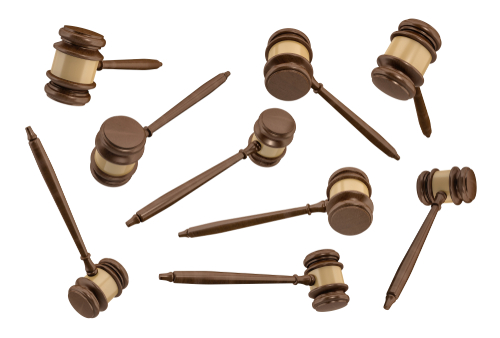DEA Extends Telemedicine Flexibilities for Prescribing of Controlled Medications: Second Time is the Charm
On October 6, 2023, the Drug Enforcement Administration (DEA) released a second temporary rule extending the COVID-19 Telemedicine Flexibilities for Prescription of Controlled Medications. This second extension, issued shortly after DEA’s listening session on a potential new Telemedicine Special Registration, gives practitioners and patients certainty of the DEA requirements for telemedicine prescribing through the end of 2024.
Without this Second Temporary Rule, COVID-19 telemedicine flexibilities would expire on November 11, 2023, with respect to practitioner-patient relationships established after that date (as described in our previous blog post). This Second Temporary Rule – entitled “Second Temporary Extension of COVID-19 Telemedicine Flexibilities for Prescription of Controlled Medications” – continues the temporary extension of the “full set” of DEA’s COVID-19 waivers for prescribing controlled substances via telemedicine. Those waivers, which have been in place since March 2020, are now extended through December 31, 2024.
Key Provisions Under the DEA’s Second Temporary Rule
1. Which DEA waivers are extended under this rule?
DEA said it is again extending the “full set” of telemedicine flexibilities regarding the prescription of controlled medications, referencing the two DEA letters that authorized telemedicine waivers.
- A March 25, 2020 “Dear Registrant” letter signed by William T. McDermott, DEA’s then-Assistant Administrator, Diversion Control Division.
- A March 31, 2020 “Dear Registrant” letter signed by Thomas W. Prevoznik, DEA’s then-Deputy Assistant Administrator, Diversion Control Division.
The March 25 letter addressed two waiver exceptions: one related to DEA registrations in individual states; and one related to the in-person evaluation requirement. It stated, in relevant part:
- DEA-registered practitioners are not required to obtain additional registration(s) with DEA in the additional state(s) where the dispensing (including prescribing and administering) occurs, for the duration of the public health emergency declared on January 31, 2020, if authorized to dispense controlled substances by both the state in which a practitioner is registered with DEA and the state in which the dispensing occurs. Practitioners, in other words, must be registered with DEA in at least one state and have permission under state law to practice using controlled substances in the state where the dispensing occurs.
- Under the Controlled Substances Act (CSA), a prescription for a controlled substance issued by means of the Internet must generally be predicated on an in-person medical evaluation. See 21 U.S.C. § 829(e)(1). This requirement does not apply, however, when a practitioner is practicing telemedicine as defined by the CSA. The CSA’s definition of the practice of telemedicine includes multiple different categories of telemedicine. For several of these categories, the CSA specifically requires a practitioner to have a DEA registration in the state in which the patient is located. See, e.g., 21 U.S.C. § 802(54)(A), (B). But the practice of telemedicine during a public health emergency pursuant to 21 U.S.C. § 802(54)(D) does not include this requirement. On March 16, 2020, the Secretary of the United States Department of Health & Human Services, with concurrence of the Acting DEA Administrator, designated that the telemedicine allowance under section 802(54)(D) applies to all schedule II-V controlled substances in all areas of the United States.
The March 31 letter extended waivers with respect to prescribing of buprenorphine. It stated, in relevant part:
- DEA notes that practitioners have further flexibility during the nationwide public health emergency to prescribe buprenorphine to new and existing patients with opioid use disorder (OUD) via telephone by otherwise authorized practitioners without requiring such practitioners to first conduct an examination of the patient in person or via telemedicine.
On May 11, 2023, Foley received confirmation from the DEA’s Section Chief of its Diversion Regulatory Draft and Policy Support Section (Scott Brinks) that the registration policy outlined in the March 25, 2020 letter is being extended. Thus, the PHE policy on single-state DEA registrations will continue during the duration of the flexibilities as outlined in the May 10th Temporary Rule and extended in this Second Temporary Rule as well.
2. What time period does this Second Temporary Rule cover?
The Second Temporary Rule extends the COVID-19 PHE DEA telemedicine flexibilities through December 31, 2024. As stated in the Second Temporary Rule, the DEA has removed the distinction between new and previously seen patients outlined in the initial extension:
- This extension authorizes all DEA-registered practitioners to prescribe schedule II-V controlled medications via telemedicine through December 31, 2024, whether or not the patient and practitioner established a telemedicine relationship on or before November 11, 2023. In other words, the grace period provided in the First Temporary Rule is effectively subsumed by this Second Temporary Rule, which continues the extension of the current flexibilities for all practitioner-patient relationships – not just those established on or before November 11, 2023 – until the end of 2024.
3. Does this rule shed any light on when DEA may issue new proposed rules on this topic?
Yes. In the Second Temporary Rule, DEA stated:
- DEA is working to promulgate new standards or safeguards by the fall of 2024.
If that estimated time frame is accurate, and a new substantive proposed rule is issued in fall of 2024, that is not much time before this second extension expires. It almost seems certain that a third extension would be necessary. Time will tell.
Conclusion
This Second Temporary Rule lengthens the runway for telemedicine companies planning for changes until the end of 2024. While both expected and necessary, it remains to be seen what DEA’s proposal will look like in 2024 and whether it will include a special telemedicine registration. Stay tuned. We will continue to monitor for updates.
Want to Learn More?
Foley is here to help you address the short- and long-term impacts in the wake of regulatory changes. For more information on telemedicine, telehealth, virtual care, remote patient monitoring, digital health, and other health innovations, including the team, publications, and representative experience, visit Foley’s Telemedicine & Digital Health Industry Team or our Health Care Practice Group.






